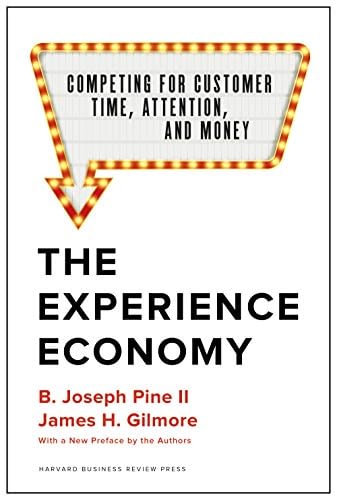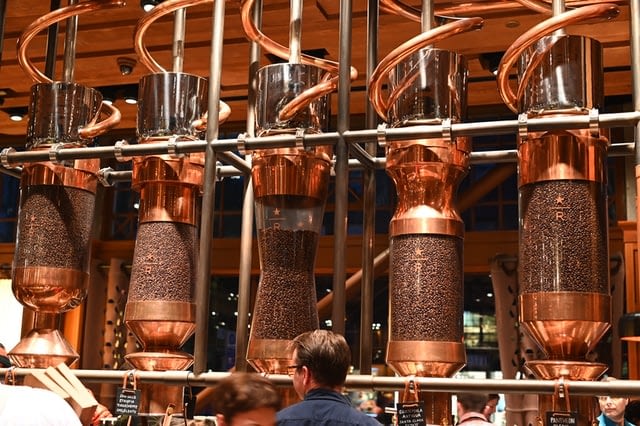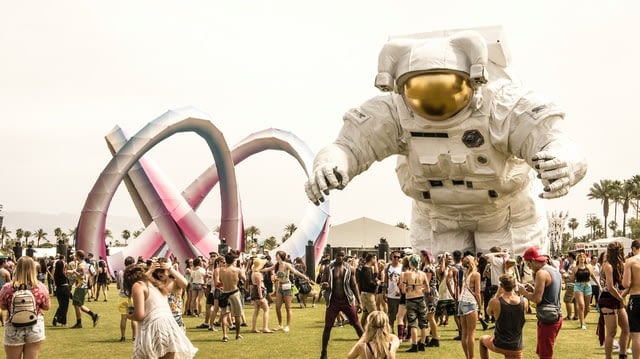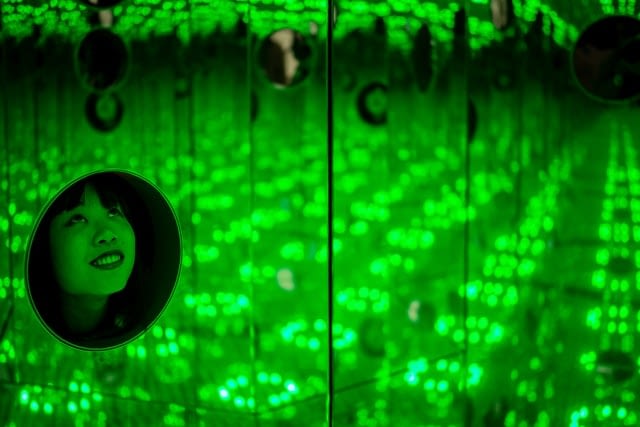Introduction
The times of just selling products and services are gone, customers want experiences.
Brands are listening and big players like Nike, Adidas, Starbucks, Nordstrom, Apple, and Airbnb are all incorporating experiences of all shapes, sizes, and forms into their products and services.
So, what is the experience economy? Why is it so important today? What are some of the leading examples?
Introduction
The times of just selling products and services are gone, customers want experiences.
Brands are listening and big players like Nike, Adidas, Starbucks, Nordstrom, Apple, and Airbnb are all incorporating experiences of all shapes, sizes, and forms into their products and services.
So, what is the experience economy? Why is it so important today? What are some of the leading examples?
Definition
In an article in 1998, Joseph Pine and James Gilmore used the term “Experience Economy” for the first time. They deemed it the next big thing after the agrarian, industrial, and service industries.

What exactly is the experience economy? Simple. The experience economy is a concept, where businesses go beyond a product or service and provide an enhanced type of service – an experience. Businesses provide customers something out of the ordinary in the form of an experience to not only make them stand out in a crowded field but to create a memorable experience for their customers.
The experience economy consists of the combination of both a “good” and a “service,” which makes it even more desirable for customers. With the boom of the internet era, customers are choosing to spend their money on experiences over the physical goods themselves. Even though Walt Disney created a space for experiencing his vision, the experience arena has gone beyond theme parks.
Why is it important?
Three out of Four Millennials would rather put their money into experiencing than simply purchasing a good or service. Why? Two good reasons are pointing towards this shift.
Customers want something new and innovative
The days of traditional consumerism are long gone. Customers are starting to pay attention to fresh ideas and to be the first to experience them. They are willing to spend their money on something new and innovative, indicating a cultural shift. This is breeding a need for companies to think on their feet to create and grab their attention with new enhanced experiences.
The draw of the internet and social media
Pictures or it didn’t happen! The most popular phrase that defines the experience economy. The internet opens up a world and it is impossible to look away. Everyone wants a piece of the experience pie to say that they have been there and done that. And one thing that is fuelling this need to plaster every experience on social media – FOMO (fear of missing out). FOMO drives people to experiences. Often having experiences creates a status quo.
Definition
In an article in 1998, Joseph Pine and James Gilmore used the term “Experience Economy” for the first time. They deemed it the next big thing after the agrarian, industrial, and service industries.

What exactly is the experience economy? Simple. The experience economy is a concept, where businesses go beyond a product or service and provide an enhanced type of service – an experience. Businesses provide customers something out of the ordinary in the form of an experience to not only make them stand out in a crowded field but to create a memorable experience for their customers.
The experience economy consists of the combination of both a “good” and a “service,” which makes it even more desirable for customers. With the boom of the internet era, customers are choosing to spend their money on experiences over the physical goods themselves. Even though Walt Disney created a space for experiencing his vision, the experience arena has gone beyond theme parks.
Examples of the Experience Economy
Customers crave experiences, therefore, brands and companies are starting to cater to the growing demand. Here are some examples:
Airbnb Experiences
In the case of Airbnb, they are not the ones directly providing experiences, but they recommend experiences to their customers depending on where they are staying. Airbnb experiences are designed and hosted by locals offering a deep dive into the local culture. This is a smart way for a service to provide experiences. They range from hiking trips to culinary indulgence, giving Airbnb customers a one-of-a-kind experience. Since its launch in 2017, their experience bookings have seen a growth of 2500% in its first year and has expanded tremendously.

Starbucks: Reserve Roastery and Tasting Room
Perhaps the most recognizable brand in the world gave its customers (and coffee lovers) an opportunity to experience coffee making. In 2014, they opened a 1,500 sq foot rotary in Seattle, providing an interactive environment, where customers could taste handcrafted coffee brewed right in front of their eyes. It involved an immersive and sensory demonstration of how they roast, source, and craft the finest coffee.

Coachella and Glastonbury Music Festival
Music Festivals have emerged as contenders in the experience economy. They are about more than the artists performing, but rather about the experience of being there and capturing an Instagram worthy moment. Festivals are collaborating with brands to create spaces that allow festival goers to have unique experiences, from art installation to big Ferris wheels at the center stage.

The Museum for everything
The museum industry is hopping on the experience trend quickly. They are providing experiences for everything imaginable, right from ice creams to Yayoi Kusama’s traveling interactive art museums. Millennials are spending both their money and time at these museums to experience art from a different perspective.

Why is it important?
Three out of Four Millennials would rather put their money into experiencing than simply purchasing a good or service. Why? Two good reasons are pointing towards this shift.
Customers want something new and innovative
The days of traditional consumerism are long gone. Customers are starting to pay attention to fresh ideas and to be the first to experience them. They are willing to spend their money on something new and innovative, indicating a cultural shift. This is breeding a need for companies to think on their feet to create and grab their attention with new enhanced experiences.
The draw of the internet and social media
Pictures or it didn’t happen! The most popular phrase that defines the experience economy. The internet opens up a world and it is impossible to look away. Everyone wants a piece of the experience pie to say that they have been there and done that. And one thing that is fuelling this need to plaster every experience on social media – FOMO (fear of missing out). FOMO drives people to experiences. Often having experiences creates a status quo.
The nature of the experience economy allows for virality, the kind which provides brands free marketing and sales. Therefore, the brands ultimately benefit from the experience economy.
Examples of the experience economy
Customers crave experiences, therefore, brands and companies are starting to cater to the growing demand. Here are some examples:

Airbnb Experiences
In the case of Airbnb, they are not the ones directly providing experiences, but they recommend experiences to their customers depending on where they are staying. Airbnb experiences are designed and hosted by locals offering a deep dive into the local culture. This is a smart way for a service to provide experiences. They range from hiking trips to culinary indulgence, giving Airbnb customers a one-of-a-kind experience. Since its launch in 2017, their experience bookings have seen a growth of 2500% in its first year and has expanded tremendously.

Starbucks: Reserve Roastery and Tasting Room
Perhaps the most recognizable brand in the world gave its customers (and coffee lovers) an opportunity to experience coffee making. In 2014, they opened a 1,500 sq foot rotary in Seattle, providing an interactive environment, where customers could taste handcrafted coffee brewed right in front of their eyes. It involved an immersive and sensory demonstration of how they roast, source, and craft the finest coffee.

Coachella and Glastonbury Music Festival
Music Festivals have emerged as contenders in the experience economy. They are about more than the artists performing, but rather about the experience of being there and capturing an Instagram worthy moment. Festivals are collaborating with brands to create spaces that allow festival goers to have unique experiences, from art installation to big Ferris wheels at the center stage.

The Museum for everything
The museum industry is hopping on the experience trend quickly. They are providing experiences for everything imaginable, right from ice creams to Yayoi Kusama’s traveling interactive art museums. Millennials are spending both their money and time at these museums to experience art from a different perspective.
What’s next for the experience economy?
The experience economy is projected to generate $12 billion by 2023.
With rapidly growing technology, there are endless possibilities for what’s next for the experience economy. Brands are shifting gears to grab their customers’ attention in the age of social media.
With the growth of the virtual, mixed, and augmented reality technologies, their applications towards the experience arena have already been monumental. The expansion and collaboration of these applications with brands will create a ripple in the experience economy that the customers have to gear up for.

What’s next for the experience economy?
The experience economy is projected to generate $12 billion by 2023.
With rapidly growing technology, there are endless possibilities for what’s next for the experience economy. Brands are shifting gears to grab their customers’ attention in the age of social media.
With the growth of the virtual, mixed, and augmented reality technologies, their applications towards the experience arena have already been monumental. The expansion and collaboration of these applications with brands will create a ripple in the experience economy that the customers have to gear up for.

Conclusion
“Nothing ever becomes real without experiencing it” -John Keats
The overall upward trajectory of the experience economy seems inevitable. With brands becoming aware of the cultural shift, they are competing to get their share in providing memorable experiences to their customers. There are opportunities to experience almost anything these days, however, there is still a long way to go.
Conclusion
“Nothing ever becomes real without experiencing it” -John Keats
The overall upward trajectory of the experience economy seems inevitable. With brands becoming aware of the cultural shift, they are competing to get their share in providing memorable experiences to their customers. There are opportunities to experience almost anything these days, however, there is still a long way to go.
References
[1] McCleary, Tamara. “Winning in the Experience economy,” The Digitalist, May 2019
https://www.digitalistmag.com/customer-experience/2019/05/06/winning-in-experience-economy-06198364
[2] Pine, Joseph. Gilmore, James. “The Experience Economy,” Harvard Business Review, August 1998.
https://hbr.org/1998/07/welcome-to-the-experience-economy
[3] “Disneyland and the Experience Economy – Not just service but selling a magical experience,” InterVirals, WordPress.com. December, 2015
[4] “5 New Trends Shaping the experience economy,” Eventbrite Blog, October 2017.
https://www.eventbrite.com/blog/experience-economy-ds00/
[5] “Selfie Factory: The Rise of Made-For-Instagram Museums,” Wired, September 2017.
https://www.wired.com/story/selfie-factories-instagram-museum/
[6] Jain, Carola. “Millennials’ complex relationship with their cell phones is driving the experience economy,” Quartz, October 2019.
References
[1] McCleary, Tamara. “Winning in the Experience economy,” The Digitalist, May 2019
https://www.digitalistmag.com/customer-experience/2019/05/06/winning-in-experience-economy-06198364
[2] Pine, Joseph. Gilmore, James. “The Experience Economy,” Harvard Business Review, August 1998.
https://hbr.org/1998/07/welcome-to-the-experience-economy
[3] “Disneyland and the Experience Economy – Not just service but selling a magical experience,” InterVirals, WordPress.com. December, 2015
[4] “5 New Trends Shaping the experience economy,” Eventbrite Blog, October 2017.
https://www.eventbrite.com/blog/experience-economy-ds00/
[5] “Selfie Factory: The Rise of Made-For-Instagram Museums,” Wired, September 2017.
https://www.wired.com/story/selfie-factories-instagram-museum/
[6] Jain, Carola. “Millennials’ complex relationship with their cell phones is driving the experience economy,” Quartz, October 2019.
